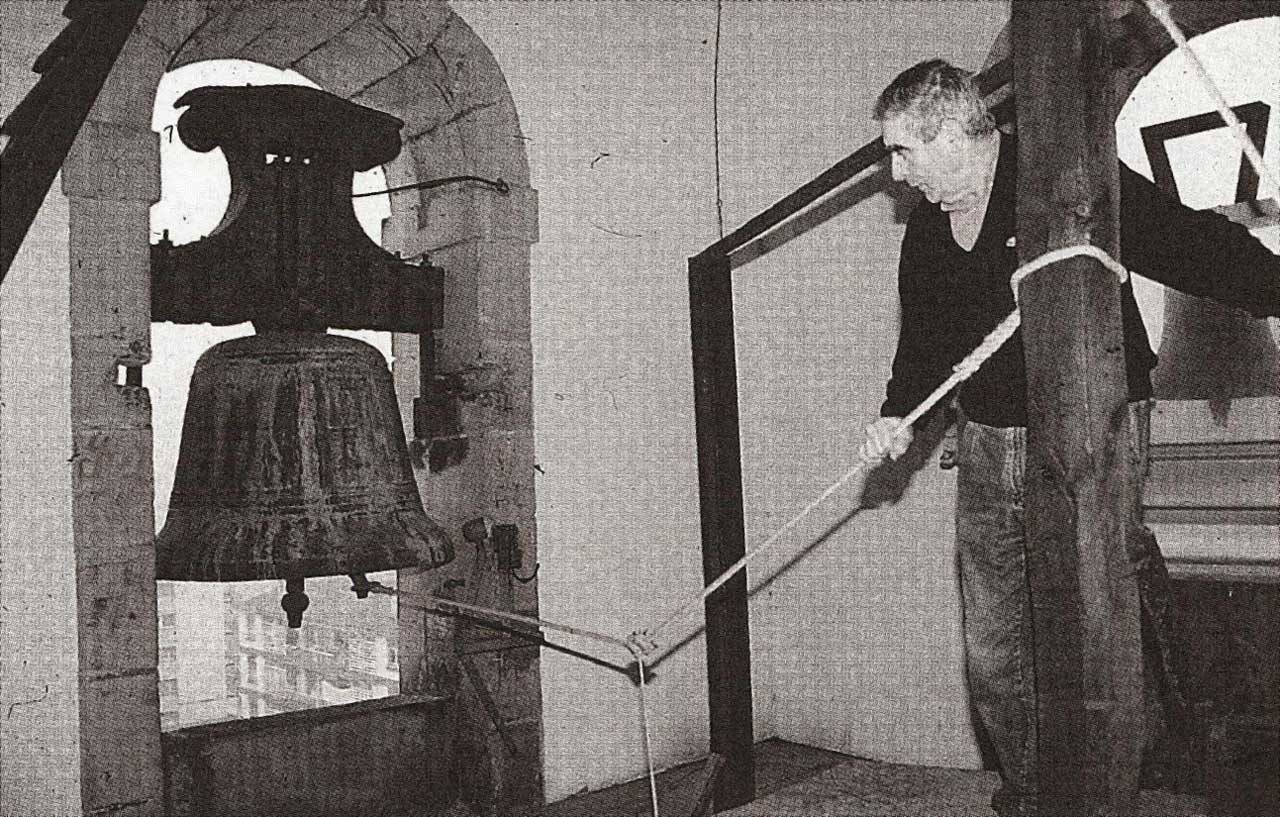Diferencia entre revisiones de «Ritos funerarios en vasconia/en»
De Atlas Etnográfico de Vasconia
(Página creada con «{{DISPLAYTITLE: Funeral Rites in the Basque Country}} {{#bookTitle:Funeral Rites in the Basque Country | Ritos_funerarios_en_vasconia/en}}») |
|||
| (No se muestran 18 ediciones intermedias de 2 usuarios) | |||
| Línea 1: | Línea 1: | ||
| + | _LABAYRU_LANDING_ | ||
<languages></languages> | <languages></languages> | ||
| − | |||
| − | + | {{DISPLAYTITLE: Funeral Rites in the Basque Country}} {{#bookTitle:Funeral Rites in the Basque Country | Ritos_funerarios_en_vasconia/en}} | |
==[landing]== | ==[landing]== | ||
| Línea 8: | Línea 8: | ||
===[ritos|Funeral Rites in the Basque Country|/atlas/ritos.png|Cultural issues surrounding death as a rite of passage, including death omens, death throes and ritual practices after death.]=== | ===[ritos|Funeral Rites in the Basque Country|/atlas/ritos.png|Cultural issues surrounding death as a rite of passage, including death omens, death throes and ritual practices after death.]=== | ||
====[Ritos_funerarios_en_vasconia | Funeral Rites in the Basque Country]==== | ====[Ritos_funerarios_en_vasconia | Funeral Rites in the Basque Country]==== | ||
| + | |||
| + | |||
====[/atlas/ritos/Camino-al-cementerio-1950-Izurdiaga.jpg|On the way to the cemetery, c. 1950. Izurdiaga (N). Source: Carmen Jusué, Etniker Euskalerria Groups.|Dying on a rainy day or if it rained after the death showed that the soul would be saved: ''gorputz ona, euritsu''.|]==== | ====[/atlas/ritos/Camino-al-cementerio-1950-Izurdiaga.jpg|On the way to the cemetery, c. 1950. Izurdiaga (N). Source: Carmen Jusué, Etniker Euskalerria Groups.|Dying on a rainy day or if it rained after the death showed that the soul would be saved: ''gorputz ona, euritsu''.|]==== | ||
| + | |||
====[/atlas/ritos/Amortajamiento-con-traje-festivo-Amezketa-1959.jpg|Shroud in a suit. Amezketa (G), 1959. Source: Antxon Aguirre, Etniker Euskalerria Groups.|A small group of neighbours would watch over the corpse in turns during the night and make sure that the light burning next to it did not go out.|]==== | ====[/atlas/ritos/Amortajamiento-con-traje-festivo-Amezketa-1959.jpg|Shroud in a suit. Amezketa (G), 1959. Source: Antxon Aguirre, Etniker Euskalerria Groups.|A small group of neighbours would watch over the corpse in turns during the night and make sure that the light burning next to it did not go out.|]==== | ||
| + | |||
====[/atlas/ritos/Portadores-del-feretro-jasotzaileak-Amezketa.jpg|Coffin bearers. Amezketa (G). Source: Antxon Aguirre, Etniker Euskalerria Groups.|Death was an event that usually occurred in the neighbourhood, a fact that meant the home of the deceased played a leading role.|]==== | ====[/atlas/ritos/Portadores-del-feretro-jasotzaileak-Amezketa.jpg|Coffin bearers. Amezketa (G). Source: Antxon Aguirre, Etniker Euskalerria Groups.|Death was an event that usually occurred in the neighbourhood, a fact that meant the home of the deceased played a leading role.|]==== | ||
| − | |||
| − | |||
====[/atlas/ritos/Adornando-las-sepulturas-para-el-dia-de-Todos-los-Santos-Bilbao-1990.jpg|Caring for the graves on the occasion of All Saints’ Day. Bilbao (B), 1990. Source: Labayru Fundazioa Photograhic Archive: José Ignacio García Muñoz.|Omens of death included those associated with strange behaviour by some domestic animals, mainly dogs and cockerels.||]==== | ====[/atlas/ritos/Adornando-las-sepulturas-para-el-dia-de-Todos-los-Santos-Bilbao-1990.jpg|Caring for the graves on the occasion of All Saints’ Day. Bilbao (B), 1990. Source: Labayru Fundazioa Photograhic Archive: José Ignacio García Muñoz.|Omens of death included those associated with strange behaviour by some domestic animals, mainly dogs and cockerels.||]==== | ||
| Línea 41: | Línea 43: | ||
==[related]== | ==[related]== | ||
| + | |||
===Outstanding contents=== | ===Outstanding contents=== | ||
====[/images/thumb/8/89/7.86_Salida_de_la_casa_mortuoria._Bera_(N)_1995.jpg/1200px-7.86_Salida_de_la_casa_mortuoria._Bera_(N)_1995.jpg|Funeral Rites in the Basque Country|Omens of death|[[PRESAGIOS_DE_MUERTE._HERIOTZAREN_ZANTZUAK/en]]]==== | ====[/images/thumb/8/89/7.86_Salida_de_la_casa_mortuoria._Bera_(N)_1995.jpg/1200px-7.86_Salida_de_la_casa_mortuoria._Bera_(N)_1995.jpg|Funeral Rites in the Basque Country|Omens of death|[[PRESAGIOS_DE_MUERTE._HERIOTZAREN_ZANTZUAK/en]]]==== | ||
| Línea 46: | Línea 49: | ||
====[/images/thumb/a/a5/7.84_Conduccion_del_cadaver_por_el_camino_mortuorio_gorpuzbidea._Orexa_(G)._(Representacion).jpg/1200px-7.84_Conduccion_del_cadaver_por_el_camino_mortuorio_gorpuzbidea._Orexa_(G)._(Representacion).jpg|Funeral Rites in the Basque Country|Corpse ways|[[CAMINOS_MORTUORIOS._HILBIDEAK/en]]]==== | ====[/images/thumb/a/a5/7.84_Conduccion_del_cadaver_por_el_camino_mortuorio_gorpuzbidea._Orexa_(G)._(Representacion).jpg/1200px-7.84_Conduccion_del_cadaver_por_el_camino_mortuorio_gorpuzbidea._Orexa_(G)._(Representacion).jpg|Funeral Rites in the Basque Country|Corpse ways|[[CAMINOS_MORTUORIOS._HILBIDEAK/en]]]==== | ||
====[/images/thumb/b/bf/7.259_Antiguo_cementerio_de_Jatsu_(L).jpg/1068px-7.259_Antiguo_cementerio_de_Jatsu_(L).jpg|Funeral Rites in the Basque Country|Apparitions and wandering spirits|[[APARECIDOS_Y_ANIMAS_ERRANTES._ARIMA_HERRATUAK/en]]]==== | ====[/images/thumb/b/bf/7.259_Antiguo_cementerio_de_Jatsu_(L).jpg/1068px-7.259_Antiguo_cementerio_de_Jatsu_(L).jpg|Funeral Rites in the Basque Country|Apparitions and wandering spirits|[[APARECIDOS_Y_ANIMAS_ERRANTES._ARIMA_HERRATUAK/en]]]==== | ||
| − | |||
| − | |||
| − | |||
Revisión actual del 09:10 25 feb 2020

Funeral Rites in the Basque Country
Cultural issues surrounding death as a rite of passage, including death omens, death throes and ritual practices after death.
Santa-Grazi (Z). Source: Boissel, W. Le Pays Basque. Sites, Arts et Coutumes. Paris, A. Calavas edit.



_1995.jpg/1200px-7.86_Salida_de_la_casa_mortuoria._Bera_(N)_1995.jpg)
.jpg/1200px-7.33_La_muerte_del_justo._Litografia_belga_del_s._XIX_procedente_de_un_caserio_de_Ibarruri_(B).jpg)
._(Representacion).jpg/1200px-7.84_Conduccion_del_cadaver_por_el_camino_mortuorio_gorpuzbidea._Orexa_(G)._(Representacion).jpg)
.jpg/1068px-7.259_Antiguo_cementerio_de_Jatsu_(L).jpg)
